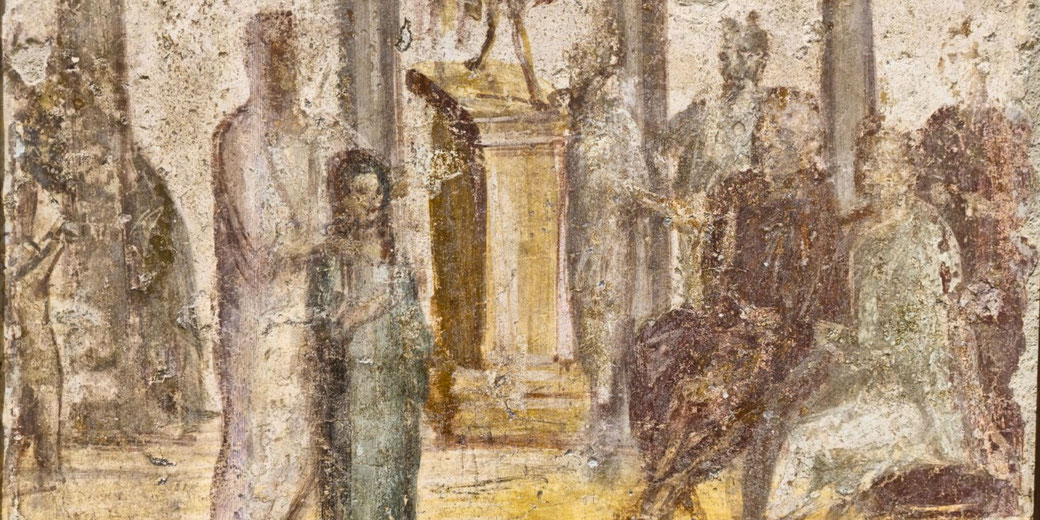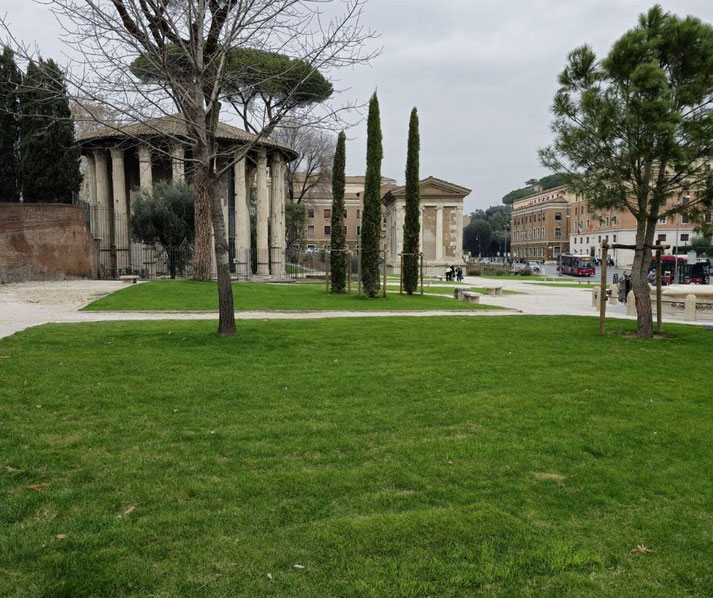What was slavery like in ancient Rome?

Slavery was a pervasive and intrinsic part of ancient Rome's social and economic structure, with an estimated one-third of the empire's population being enslaved at its peak.
From household servants to laborers, gladiators to skilled artisans, slaves played an essential role in the daily life of the ancient Romans.
Despite the brutal conditions of their servitude, some slaves managed to achieve freedom and even rise to positions of power and influence.
How did people become slaves in Ancient Rome?
In ancient Rome, people could become slaves in a variety of ways. The most common way was through being captured in war or as a result of piracy.
These individuals would be sold as slaves in markets and would then become the property of their new owners.
Additionally, children born to slave mothers were automatically considered slaves, as were individuals who were unable to pay off their debts and were sold into slavery to cover the amount owed.
Slavery could also be a form of punishment for certain crimes. However, it is important to note that not all slaves in ancient Rome were treated equally, with some being treated better than others depending on their skills and the nature of their work.
The notorious slave markets
The slave markets in ancient Rome were bustling centers of commerce where slaves were bought and sold.
The most famous of these markets was the one located in Rome's Forum Romanum, called the "Forum Boarium".
This market was named after the oxen that were sold there, but it also sold a wide variety of other goods, including slaves.
Other slave markets were located throughout the city, often near major ports or along well-traveled roads.
At these markets, prospective buyers could inspect the slaves they were interested in purchasing, checking their physical condition, skills, and temperament.
The slaves would then be auctioned off to the highest bidder, with the profits going to the seller.
However, the island of Delos in the Aegean Sea was one of the largest and most notorious slave markets in the ancient world, where thousands of slaves were bought and sold every day during the height of the Roman Empire.

What did slaves do?
Slaves in ancient Rome had a wide range of roles and responsibilities, and their tasks varied depending on the type of work they were trained for and the wishes of their owners.
Some slaves worked in agriculture, either on large estates or small farms, and were involved in tasks such as planting, harvesting, and caring for livestock.
Columella, a 1st-century AD Roman writer on agriculture, provided extensive details about the management and use of slaves on Roman estates in his work 'De Re Rustica,' illustrating the reliance on slave labor in Roman agriculture.
Others worked in urban settings as domestic servants, performing tasks such as cooking, cleaning, and caring for children.
Skilled slaves were often trained in specific crafts or trades, such as carpentry, metalworking, or weaving.
Some slaves were even trained to be gladiators, forced to fight for the entertainment of their owners and the crowds.
In general, slaves in ancient Rome were used to perform the tasks that free citizens did not want to do or could not afford to hire others to do, and they were seen as valuable commodities to be used for their owners' profit and convenience.
How were slaves treated?
The treatment of slaves in ancient Rome varied widely depending on the owner and the type of work the slave was engaged in.
While some owners treated their slaves relatively well, providing them with decent living conditions and even opportunities for education or advancement, others were notoriously cruel, subjecting their slaves to brutal physical punishment, exploitation, and inhumane working conditions.
Slaves were seen as property rather than people, and as such, owners had complete control over their lives and could do with them as they pleased.
Vedius Pollio, a wealthy Roman equestrian, was infamous for his extreme cruelty towards his slaves, including throwing them into a pool of lampreys as punishment, a practice condemned by Emperor Augustus.
However, there were some legal protections for slaves in ancient Rome, including restrictions on the types and severity of punishments owners could inflict and the ability of slaves to earn or buy their own freedom.
In fact, Emperor Claudius issued an edict in 52 AD granting certain protections to slaves, including the right to petition against cruel treatment by their masters.
Additionally, some owners recognized the economic value of keeping their slaves healthy and well-fed and thus provided for their basic needs.
What happened when the slaves revolted?
The Servile Wars were a series of three slave revolts that took place in ancient Rome between 135 BC and 71 BC.
The term "servile" refers to slaves, who made up a significant portion of the population in Rome at the time.
The first Servile War began in 135 BC when a slave named Eunus, who was from Syria, led a rebellion of slaves working in the sulfur mines on the island of Sicily.
Eunus declared himself king and was able to establish a large and well-organized army of slaves.
The rebellion lasted for nearly a decade and resulted in the deaths of thousands of people on both sides before it was finally suppressed by the Roman general Publius Rupilius.
The second Servile War began in 104 BC when a slave named Athenion led a rebellion of slaves on the island of Sicily.
The rebels were able to defeat several Roman armies before being defeated and killed by the Roman general Manius Aquillius.
The third and final Servile War began in 73 BC when the gladiator Spartacus led a rebellion of gladiators and slaves in the region of southern Italy.
Spartacus was able to lead his army of rebels in several victories against Roman armies before being defeated and killed by the Roman general Marcus Licinius Crassus in 71 BC.
The Servile Wars were some of the most significant slave revolts in ancient history and demonstrated the power and potential of enslaved populations to resist their oppressors.
These uprisings also highlighted the brutality of the slave system in Rome and the deep inequalities that existed between free citizens and those who were enslaved.
How could slaves become free?
In ancient Rome, slaves had several ways of gaining their freedom. One common method was through manumission, which was the legal process of freeing a slave.
There were three main ways this could happen:
- The slave's owner could grant them their freedom as a reward for loyal service or for personal reasons.
- A slave could purchase their freedom from their owner using money they had earned through working or been given by a patron.
- A slave could be set free through a formal ceremony called a "vindicta" that involved a third party asserting the slave's right to be free.
In addition to manumission, some slaves were able to gain their freedom through other means.
For example, slaves who were able to show that they had been mistreated by their owners or had been illegally enslaved could petition for their freedom in court.
Slaves who had been captured in war and subsequently freed by their captors could also become free citizens.
It is estimated that by the 1st century AD, approximately 50% of slaves in urban areas like Rome were manumitted after a certain period of service, often in their master's will or through self-purchase.
Becoming a 'freedman'
A freedman in ancient Rome was a former slave who had been granted his freedom through manumission or other means.
Freedmen occupied a unique social position in Roman society, as they were no longer slaves but were not considered to be full citizens either.
Despite this, they were still able to engage in many aspects of Roman society, including business, commerce, and even politics, although they were often subject to discrimination and faced certain restrictions.
Freedmen were required to take on a new name upon being freed, often one that reflected their former status as a slave, such as "Marcus Tullius Tiro", the name of the famous freedman of Cicero.
Some former slaves were able to gain wealth and power through their newfound freedom, either by starting their own businesses or by working for wealthy patrons.
Tomb inscriptions of freedmen, such as the tomb of Marcus Vergilius Eurysaces, a wealthy baker, highlight the significant contributions and successes of former slaves who gained freedom and became prosperous in Roman society.
However, many freedmen continued to struggle with economic and social challenges, and were often viewed with suspicion and distrust by free citizens.
Being an imperial slave: the most attractive option?
Being an imperial slave in ancient Rome had some advantages and privileges that were not available to most other slaves.
The imperial slaves were owned by the emperor or the imperial household and were responsible for various tasks related to the administration of the empire and the running of the imperial palace.
These tasks included everything from cleaning and cooking to serving as personal attendants and even serving as advisors to the emperor.
One of the main advantages of being an imperial slave was the potential for upward mobility.
Imperial slaves had access to education and training that was not available to most other slaves, and many were able to rise through the ranks to become trusted advisors and confidants of the emperor.
Another advantage of being an imperial slave was better living conditions and treatment.
The imperial household was known for providing its slaves with relatively good food, clothing, and living accommodations compared to other slave owners.
Additionally, the emperor himself had the power to intervene in cases of mistreatment or abuse of his slaves, providing them with a measure of protection.
What do you need help with?
Download ready-to-use digital learning resources
Copyright © History Skills 2014-2025.
Contact via email
With the exception of links to external sites, some historical sources and extracts from specific publications, all content on this website is copyrighted by History Skills. This content may not be copied, republished or redistributed without written permission from the website creator. Please use the Contact page to obtain relevant permission.





